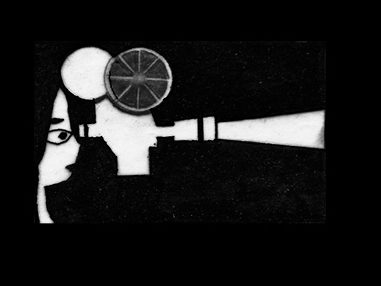The Room Next Door: A major film by Pedro Almodóvar- Starring Julianne Moore and Tilda Swinton
Release date in France: January 8, 2025
Director: Pedro Almodóvar
Main cast: Julianne Moore, Tilda Swinton, John Turturro, Alessandro Nivola
Award: Golden Lion at the 2024 Venice International Film Festival
Paris Premiere of The Room Next Door
On December 16, 2024, Pedro Almodóvar, Julianne Moore, and Tilda Swinton attended the Paris premiere of The Room Next Door at the Pathé Palace. The trio displayed a deep bond on the red carpet, reflecting their close collaboration on this project.
I had the opportunity to be there, invited by the AlloCiné Club. The screening was followed by an inspiring Q&A session.
Synopsis of The Room Next Door
Based on the American novel What Are You Going Through by Sigrid Nunez, The Room Next Door delves into universal themes such as redemption, remorse, and mortality.
Ingrid (Julianne Moore) and Martha (Tilda Swinton), longtime friends, began their careers at the same magazine. While Ingrid became a successful novelist and Martha a war reporter, their lives took different paths. However, years later, their lives intertwine again under difficult circumstances.
Together, they revisit their shared past and face their futures in deeply emotional conversations.
A Triumph at the Venice Film Festival
Presented in the official competition at the 2024 Venice Film Festival, The Room Next Door received a 17-minute standing ovation and won the Golden Lion, making Pedro Almodóvar the first Spanish director to receive this prestigious award. This film marks an important milestone in his career, blending emotional depth with nuanced storytelling.
Almodóvar’s artistic influences
True to his style, Almodóvar enriches his film with literary and cinematic references:
- The Dead by James Joyce and John Huston’s film adaptation,
- Voyage to Italy by Roberto Rossellini,
- Mao II by Don DeLillo,
- La Dolce Vita by Federico Fellini,
- and the works of Virginia Woolf.
Almodóvar at his core
In 2024, Almodóvar also released The Last Dream, a collection of short stories described as a “fragmentary autobiography.”
But it is with The Room Next Door, his first English-language feature film, that he reached a new milestone in his career. Adapted from Sigrid Nunez’s What Are You Going Through, this film brings Julianne Moore and Tilda Swinton together in a contemplative exploration of life and death.
However, this shift toward introspection didn’t come out of nowhere: Pain & Glory (2019), with its autobiographical narrative steeped in memory, illness, and reconciliation, was already paving the way for a more personal exploration of memory and mortality.
Strange Way of Life, his short film presented at Cannes in 2023, also addressed regrets and goodbyes through the lens of the Western, a genre deeply rooted in themes of fatality and destiny.
With The Room Next Door, Almodóvar goes even further.
Friendship as the ultimate refuge in The room next door
Almodóvar’s cinema has always placed women at its heart. His female characters carry secrets, emotional wounds, and family tragedies, yet they find strength and resilience. He has explored motherhood in all its forms in:
- High Heels (1991),
- All About My Mother (1999),
- Volver (2006),
- The Flower of My Secret (1995),
- Julieta (2016).
He has also depicted complex romantic relationships in Law of Desire (1987) and Talk to Her (2002), often marked by age gaps or emotional complications.
In The Room Next Door, Almodóvar shifts his focus to friendship. Martha (Tilda Swinton), diagnosed with terminal cancer, asks her longtime friend Ingrid (Julianne Moore), whom she hasn’t seen in years, to stay with her during her final moments.
Death as an act of freedom in The room next door
Death has always loomed large in Almodóvar’s work, but it has never been portrayed with such clarity and restraint.
In All About My Mother, the death of a son triggers a journey toward forgiveness and in Talk to Her, the boundary between life and death becomes blurred, questioning our ability to stay present for those who seem “elsewhere.”
With Volver, death is familiar, almost tender—it becomes a continuation, with the dead never fully leaving the living.
But in The Room Next Door, death is a choice. Martha refuses to be a passive victim and insists on regaining control of her life’s final chapter. This choice echoes Amour by Michael Haneke, but where Haneke’s approach is cold and clinical, Almodóvar’s is warm and comforting. Here, death is a lucid farewell, filled with dignity and tenderness.
A minimalist aesthetic
Almodóvar’s signature style is often associated with vibrant colors and spaces brimming with memories. Here, everything is minimalist: wide, nearly empty rooms and dialogue reduced to its essence. Silence carries immense weight.
Julianne Moore and Tilda Swinton deliver performances marked by restraint. Their characters don’t need grand statements—everything is conveyed through their glances and gestures. This simplicity may feel distant, even unsettling, but it is precisely this restraint that makes their story universal.
Influences: Joyce, Huston, and Rossellini
The film explicitly references The Dead (1987) by John Huston, based on James Joyce’s novella. Huston, himself terminally ill during filming, depicts a family gathering steeped in memory and mortality. The final scene, where snow falls equally upon the living and the dead, serves as a reminder that we all share the same fate.
Almodóvar embraces this idea by filming simple yet profound moments: a conversation under a tree, a shared silence while gazing at the horizon. Like Huston, he captures the vibrancy of life, even on the threshold of death.
There is also a nod to Voyage to Italy (1954) by Roberto Rossellini, where a couple reconnects amidst ancient ruins. Similarly, Almodóvar evokes memories and loss through timeless places, as his characters navigate the inevitability of farewell.
Colors: Light and thresholds
Yellow is omnipresent in the film. It is not a bright, joyful yellow but rather a soft, warm hue, like late afternoon sunlight. It evokes the warmth of memories and fleeting moments between two people.
Red, though more subtle, serves as a symbolic beacon. The red door, slightly ajar, represents a passage—not just toward death but also toward memory. Unlike the bold reds of High Heels or Talk to Her, this red is subdued, more like a whisper of the past.
A story of presence, not goodbye
This film moved me with its honesty and simplicity. Almodóvar doesn’t seek grand emotional farewells; he shows what it means to truly “be there.” Ingrid doesn’t try to persuade or hold Martha back—she simply stays.
This story questions how we support someone without trying to change their course. What strength does it take to accept the end of someone we love? Almodóvar poses these questions without providing easy answers—just fragments of humanity captured within a delicate, minimalist frame.
Conclusion
The Room Next Door is not only a film about death, but about love in its purest form: being present. Not trying to save, not filling the silence—just staying until the end.
Unlike the dramatic outbursts of early Almodóvar films, this one is contained. No grand speeches or reconciliations, just quiet love. This isn’t a theatrical farewell—it’s an intimate final gesture, understated yet profound.
This film resonates because it explores the hardest truth: how to let go of those we love. Almodóvar doesn’t romanticize death. Instead, he shows that sometimes, the greatest act of love is simply being there, even when there’s nothing left to say.
That’s why this film became my favorite. It says everything without saying much at all—and it’s the silence that stays with you.
Upcoming:
- Tilda Swinton will be honored with the Berlinale Golden Bear for her lifetime achievement in 2025.
- Pedro Almodóvar recently shared his desire to collaborate with Dua Lipa, describing her as a potential “Almodóvar girl.” He admires her versatility and cultural impact and envisions offering her a role in a future project.
Interview
Bande-annonce
Passing of Marisa Paredes
On December 17, 2024, Almodóvar expressed his deep sorrow following the death of actress Marisa Paredes, who passed away at the age of 78. Considered one of his muses, Paredes collaborated with him on six iconic films, including High Heels (Tacones lejanos) and The Flower of My Secret (La flor de mi secreto).
Almodóvar stated: “Marisa is an integral part of my life.”


